Introduction
Cold emails are often seen as outdated.
People think they’re an old school marketing tactic that doesn’t work.
It gets lumped into the category of cold calling and tossed to the side.
But sending cold email campaigns can still work.
In fact, it’s one of the best ways to grow your business.
On average, email produces $38 for every $1 spent. That’s a 38x return on investment.
You can’t afford to ignore the potential of using email for outreach and growth.
If you aren’t using email for customer acquisition, you could be losing out on tons of new customers.
But cold email outreach is also complicated.
People expect personalized messaging in today’s modern world.
Consumers are sick of the standard “Hey ((f-name))” emails that they see every day in their inbox.
So the problem quickly becomes:
How can you reach people with cold emails that actually convert? How do you stand out and personalize mass email campaigns?
And more importantly: Is this even worth it? Does cold outreach work? Does email really do well for customer acquisition?
Yes. Absolutely.
And that’s exactly what Pratima Aravabhoomi, the founder, and CEO of Craft Street Design Co did.
She invested her time and money into cold outreach to grow her startup.
Within just a few weeks she landed huge corporate clients and saw impressive, unexpected growth.
And the good news is that her strategy is easily repeatable.
Today you’re going to learn exactly how she did that, and how you can do it too.
Let’s get started.
How Craft Street Design Co used cold email outreach
Pratima Aravabhoomi founded Craft Street Design Co in 2015 in Cupertino, California after leaving a job consulting for Apple.
She was inspired daily by reading quotes and phrases online. She said that these quotes and sayings fueled her entrepreneurial fire so much so that she built her entire business around them.
The main products that they sell are posters and decorative art that contains inspiring quotes and messages.
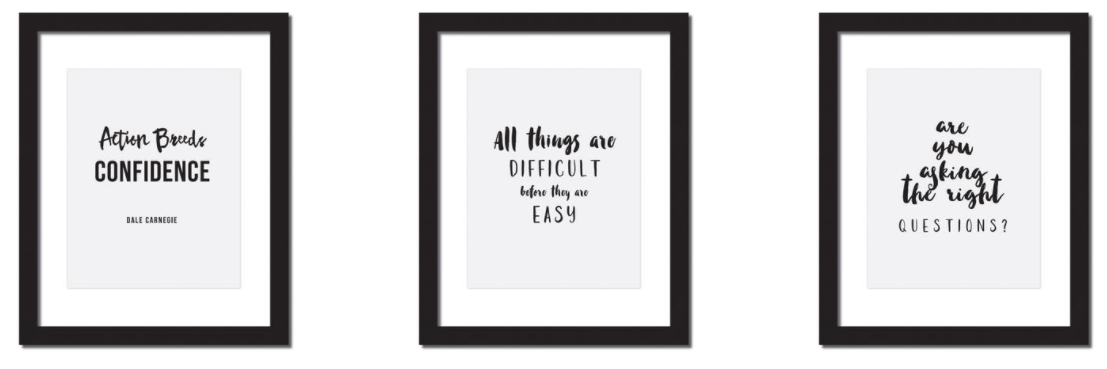


The end goal of the product was really to make a difference in people’s lives and inspire the entrepreneurial spirit in as many people as possible.
And she did just that. She scaled her business from the ground up using one simple strategy:
Cold email outreach.
She actually landed multiple corporate level clients within just a few weeks of opening her business.
She used tools like LinkedIn’s InMail to reach contacts at larger corporations that are notoriously difficult to track down.
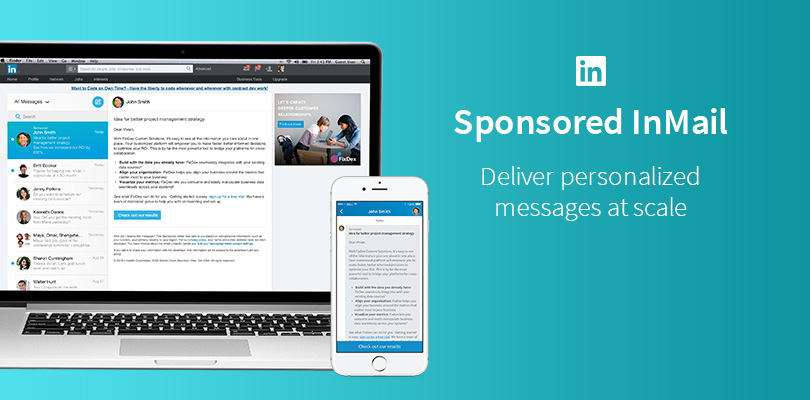


That included Chief Marketing Officers and the heads of HR for Fortune 500 companies.
She drafted out a few personalized templates that she could easily scale to fit tons outreach targets.
That helped her reach out to more people, faster.
Her true secret was crafting an angle that sold itself.
For example, if you write a blog post, you need an angle. You have your topic, like “SEO Tips.”
But what’s your angle?
What about this article is going to get people to actually read it?
An angle would be something like: “SEO can grow your business fast, and if you don’t do it, X, Y, and Z will happen.”
The idea is to hook people in.
And that’s exactly what Pratima did with her outreach.
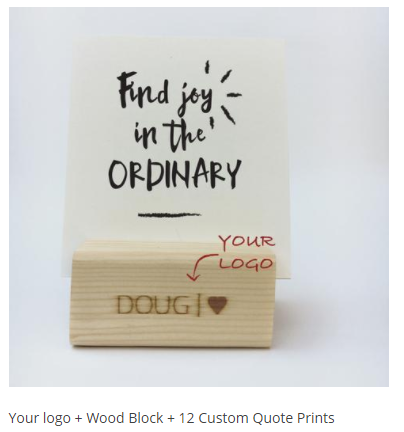


She took existing products like the one featured above and turned them into selling points.
For example, she sells customizable orders that are meant for other large businesses to buy.
So in her email cold outreach, she came up with the angle of pitching them as a gift for company employees during holiday seasons to boost creativity and inspiration.
And this caught fire.
In fact, her conversion rate on these emails was 50%.
How? Because she did her research.
She found the right person to contact at each company and pitched them an offer they simply couldn’t refuse.
And she personalized every single email.
That specific strategy has lead to countless customers and a six-figure monthly revenue!
Here’s a bit of background on how effective email can be for customer acquisition. And how you can replicate Craft Street Design’s growth.
How effective is cold emailing?
If Craft Street Design Co’s 50% conversion rates aren’t proof enough, here are a few reasons why you should be using cold email outreach.
Email still delivers the highest ROI for marketers to this day, according to studies by Campaign Monitor and VentureBeat.
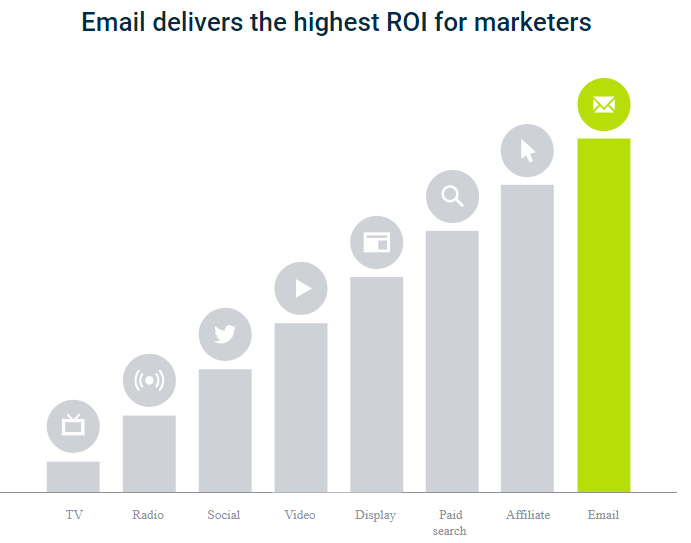


And it blows social media out of the water (by 40x) for customer acquisition according to that same data set.
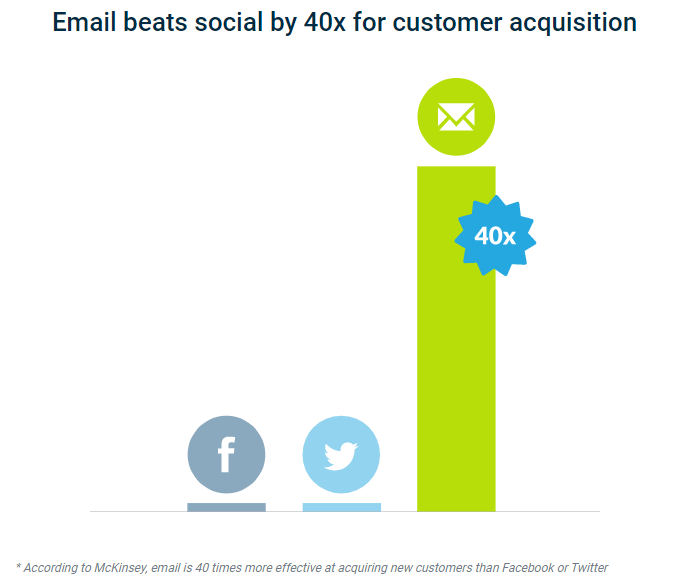


Lots of marketers swear by Facebook and Twitter for customer acquisition. But email is the clear winner.
A 2016 study from eMarketer found similar results with email too. In fact, it’s median ROI for marketers was 122%.
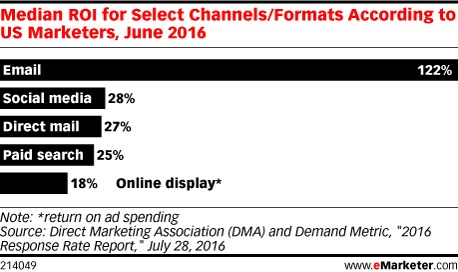


Another similar study done by “Email Marketing Gold” found that email had the best ROI for marketers, coming in at $40 for every one dollar spent:
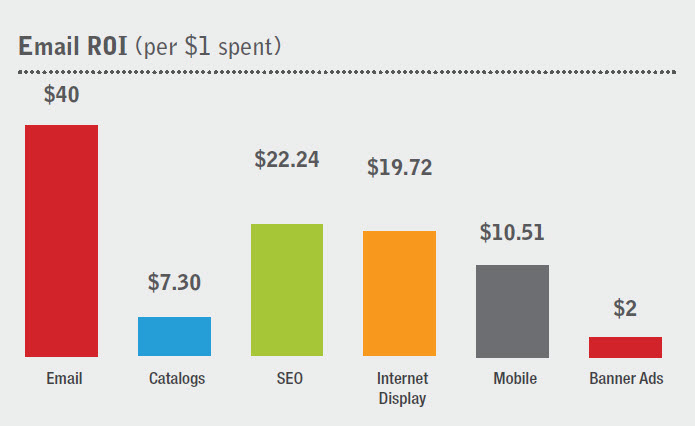


In this study, email outperformed even SEO which is known for having a huge return on investment.
Email consistently drives a higher ROI than almost any other marketing channel.
So including email outreach in your marketing strategy is a must.
Cold email outreach can provide the growth that your company desperately needs to succeed.
With that being said, here’s how you can start a cold email outreach campaign to grow your own business fast.
Here’s how you can drive the bottom line with cold email
The beauty of Pratima’s cold email strategy is the fact that it’s replicable for almost any ecommerce business.
Here, we’re going to walk you through the exact steps that Pratima took to grow her business to six-figure sales numbers.
Ready? Let’s start at the beginning.
Step 1. Create personalized email templates
The first step in any good email outreach campaign is developing templates.
These should sum up your value proposition, or the reason someone should open, click, and do business with you.
There are three main elements to include in a basic value proposition:
- End value: What is the concrete, tangible benefit someone will receive?
- Emotional value: What gets people to empathize with your solution?
- Economic value: And how will that make people more money, or cut their costs?
Pratima’s value proposition was providing a great motivating gift for corporate employees.
It helped the HR heads save time by already producing the idea for them. And the value was seen in the meaning behind the gift:
Inspiration, creativity, and motivation for the workforce.
Take time to develop a great value proposition that makes sense for your product.
Once you’ve created a value proposition, you need to create a few personalized email templates.
Because personalized emails get 26% higher open rates.
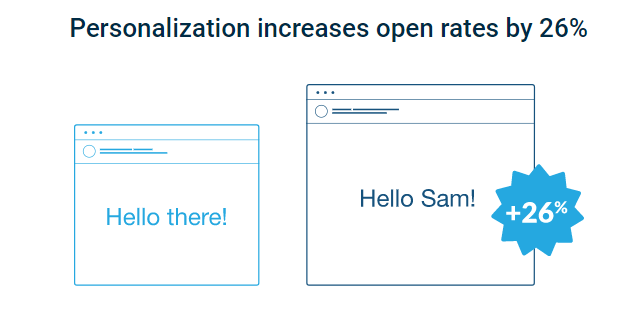


Here are some important aspects to keep in mind when personalizing emails:
- Use a compelling subject line
- Use the recipient’s name
- Relate the content to their business or life in a specific way
- Communicate relevant value
Let’s start with the subject lines. Your subject line is like your headline on a blog post. It needs to grab attention.
According to Close.io, the following four subject lines will increase your open rates by 35% on average:
- “[Introduction] [name]” or “[Introduction] [your name/company] <> [their name/company]”
- “quick request”
- “Trying to connect”
- “Company name”
Yes, the lowercase capitalization in #2 is on purpose. It’s supposed to look friendly and informal.
That way, it resembles an email from a close colleague, as opposed to an overly professional, random person.
Try implementing those subject lines if you want an increased open rate and a better shot at converting customers.
Next, we need to craft an all around email template that is still personal, yet scaleable.
Here’s one I’ve crafted just for you:
Subject line: Looking to connect
Hi ((firstname)), Hope this email finds you well. I was reaching out because ((insert reason as to why you reached out; i.e. their company is interesting, you know someone, you liked their product, etc. give a personal reason here)). I’m the ((your job title)) of ((your company name)), and I think that our products would be great for your ((company, team, family, etc.)). I created ((short product description)). It would be great for ((value proposition)). Maybe we can connect on this soon. Are you free for a call on ((specific date and time))? Thanks so much! ((your first name))
Once you’ve crafted a personal email template, you can start prospecting for potential outreach targets.
Here’s how.
Step 2. Prospect for clients
After developing a value proposition and email template, you need to start prospecting for outreach targets.
There are a few effective methods to getting this done fast.
I recommend using LinkedIn and Voila Norbert as your primary tools for finding contact information for your ideal prospects.
The goal with using cold emailing to scale your ecommerce store is to focus on big-ticket clients.
If you want tons of small clients, using PPC might be the best route for you.
If you’re looking for high-level clients that will produce large lifetime values, cold outreach is perfect.
To get started, fire up Google and head to the search bar:
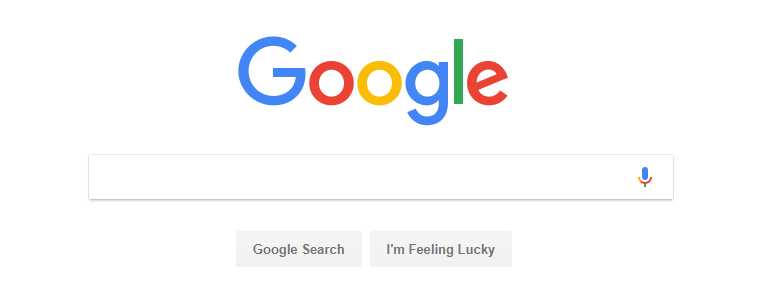


Start by searching for companies that could benefit from your products.
For example, do you sell t-shirts, candles, skin care products?
If you sell custom clothing, simply start by searching for popular companies in your local area that you could easily connect with.
That’s exactly what Pratima did.
Search for popular companies in your city or state:
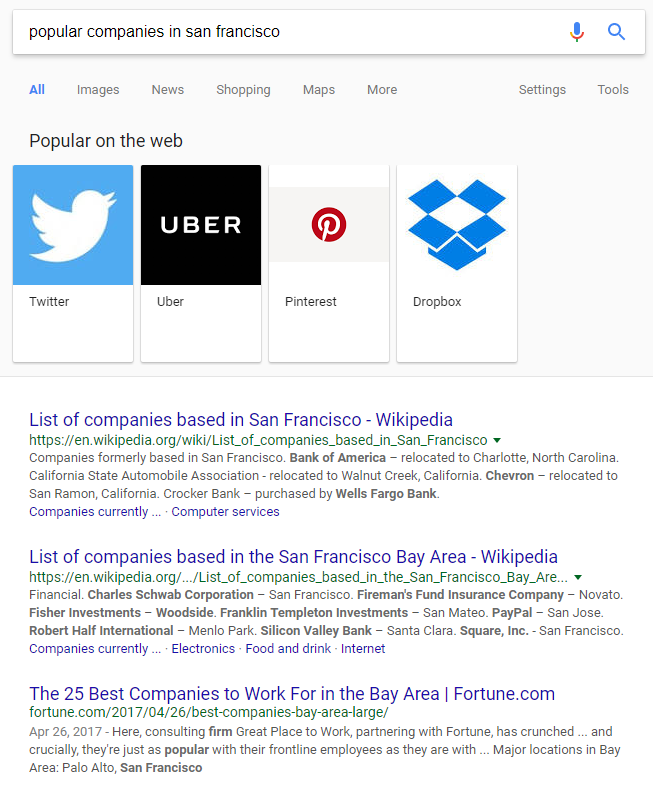


Once you’ve found a few companies that you think would be good to cold pitch, you can head to LinkedIn and search for that company:
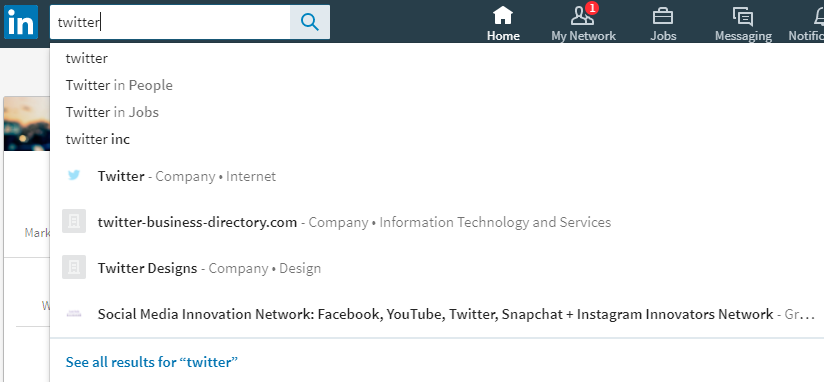


Next, click on that company’s LinkedIn profile and click on their “employees” tab:



This will allow you to see all of the current employees at a given company.
Next, you’ll probably need to refine the search depending on how big the company is.
Pratima said that she searched for HR reps that would have enough time to respond to her, rather than CEOs.
Counterintuitively, that means you look for people a little lower on the corporate ladder, first.
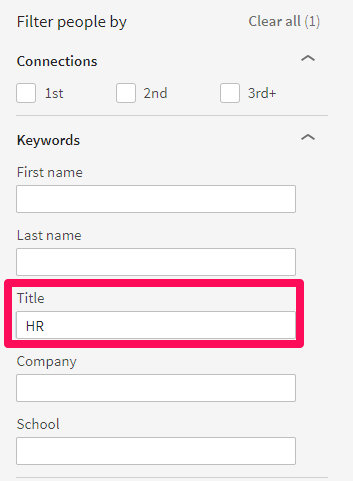


Narrow down the employee list by searching under the keywords section.
You should easily be able to find the right contact with filtered searchers:



Once you’ve done that, open up your Voila Norbert tool. If you don’t have a paid account, you can still get 50 free leads:
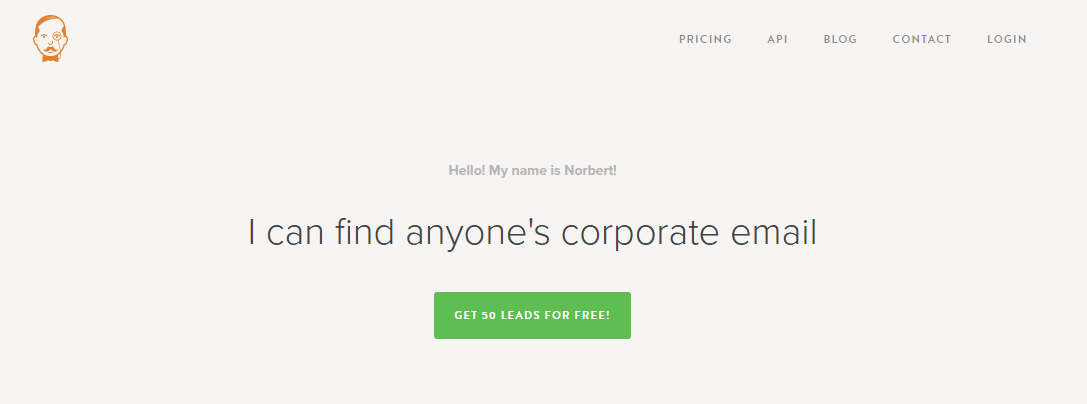


Once you’ve created an account, it’s time to get their email.
Simply type their first and last name into the first box, and their company website into the second:



Next, hit the green button to get your result:



This tool is incredibly accurate and a great way to prospect for emails in large quantities.
Once you’ve got your target list of emails, simply start sending them emails from your personal email account with the template we gave you!
Use these emails to craft personalized value propositions for each company.
For example with Twitter, if you were selling custom clothing, you could easily pitch them products for company gifts or new employees.
The options are limitless. You just need to think outside the box.
Step 3. Try using LinkedIn InMail for better conversion rates
One of the attributing factors in Pratima’s success was her use of LinkedIn’s InMail feature.
She did small batch outreach with this tool and found 50% conversion rates to huge corporations.
Not bad, huh? Imagine landing 50% of the huge companies that you target with simple outreach.
One of the tools that she recommends to hit these numbers is LinkedIn’s InMail feature.
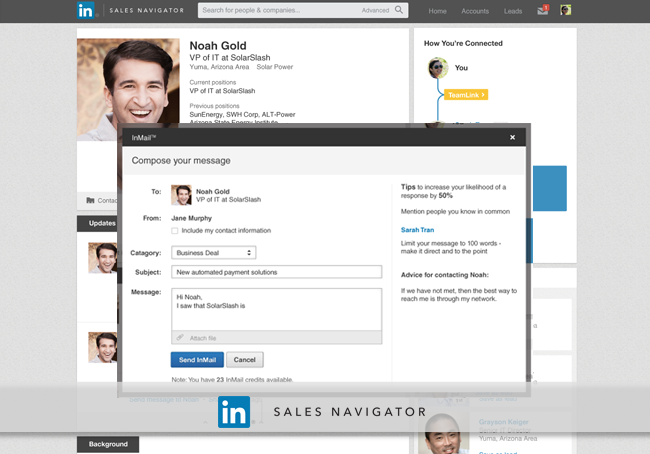


To get started with LinkedIn InMail, you need to have a premium LinkedIn account.
You can get one (or upgrade an existing one) here.
LinkedIn’s InMail and Sales Navigator tools are the best in the business when it comes to generating leads via email style outreach.
If you aren’t having success reaching people on their work email, LinkedIn should be your go-to strategy.
Head to the Sales Navigator dashboard, and this is what you’ll see:
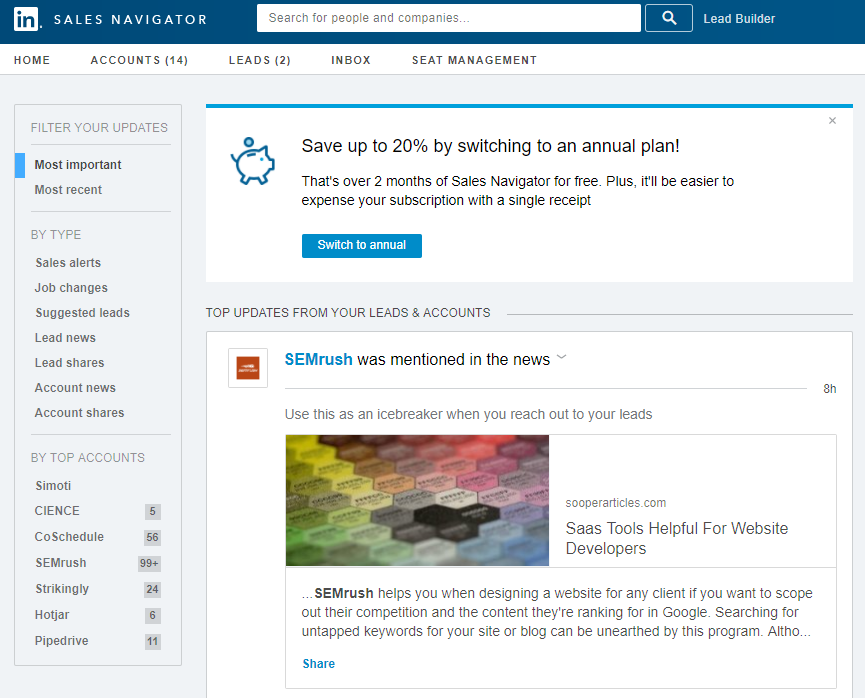


You can use it to search for accounts, companies, and people.
Take your existing contact outreach list target and plug their names back into the search bar:



Once their account shows up, simply click on it and get taken directly to their profile. From here we can add them as a lead in our Sales Navigator and send them an InMail:
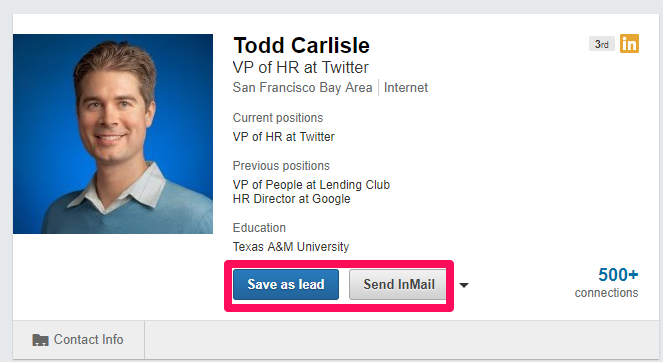


This will help us keep tabs on what this outreach lead is doing on LinkedIn so that we can engage with them at multiple touch points.
To send an email, simply click the “Send InMail” button and start dropping in your templated email that we covered earlier in this article:
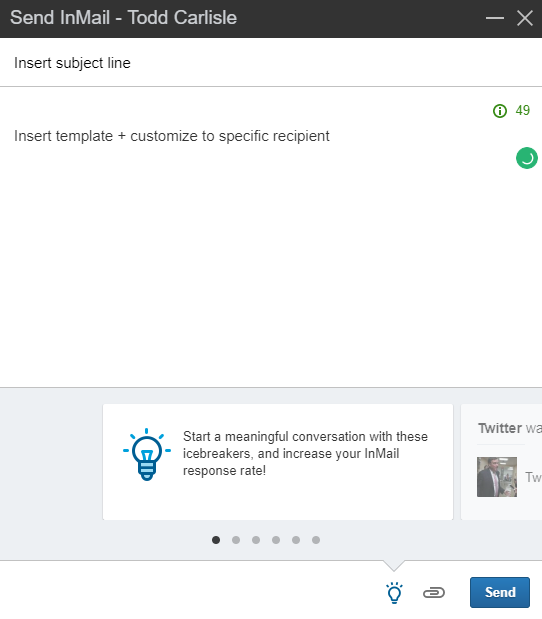


InMail is an awesome way to achieve higher levels of personalization because the messages are coming directly from your LinkedIn account.
The messages seem more personable and less like a spammy outreach email.
And that’s exactly why Pratima was able to convert 50% of her targets each and every campaign.
What’s your cold emailing secret?
Cold emailing is often seen in a negative, outdated, spammy light.
It’s often compared to cold calling or door-to-door sales strategies that are invasive and annoying.
But that’s actually far from the truth.
Cold emailing is still one of the best tools we can use for customer acquisition.
Email is not dead, and it should be a huge part of your marketing strategy.
It produces an average of 38x returns on investment. Meaning for every single dollar spent you can expect $38 in return.
You can’t risk not using email as a platform to grow your business and acquire new customers.
Pratima is the perfect example of using email to scale your business.
She grew hers from the ground up with a premier cold outreach strategy for her ecommerce products.
Start by creating personalized email templates that deliver high-quality value propositions.
Find creative ways to pitch your product that will stand out from the competition.
Prospect for clients using LinkedIn and Voila Norbert to get their emails.
Take those emails and send your campaigns being sure to follow up and nurture the lead.
If that doesn’t work, try using LinkedIn’s InMail platform to drive more personalized engagement and connections.
Pratima found a 50% conversion rate using LinkedIn, and you can too.
What’s your opinion on cold email outreach for customer acquisition?
Have you ever seen any success?
Let us know in the comments below!

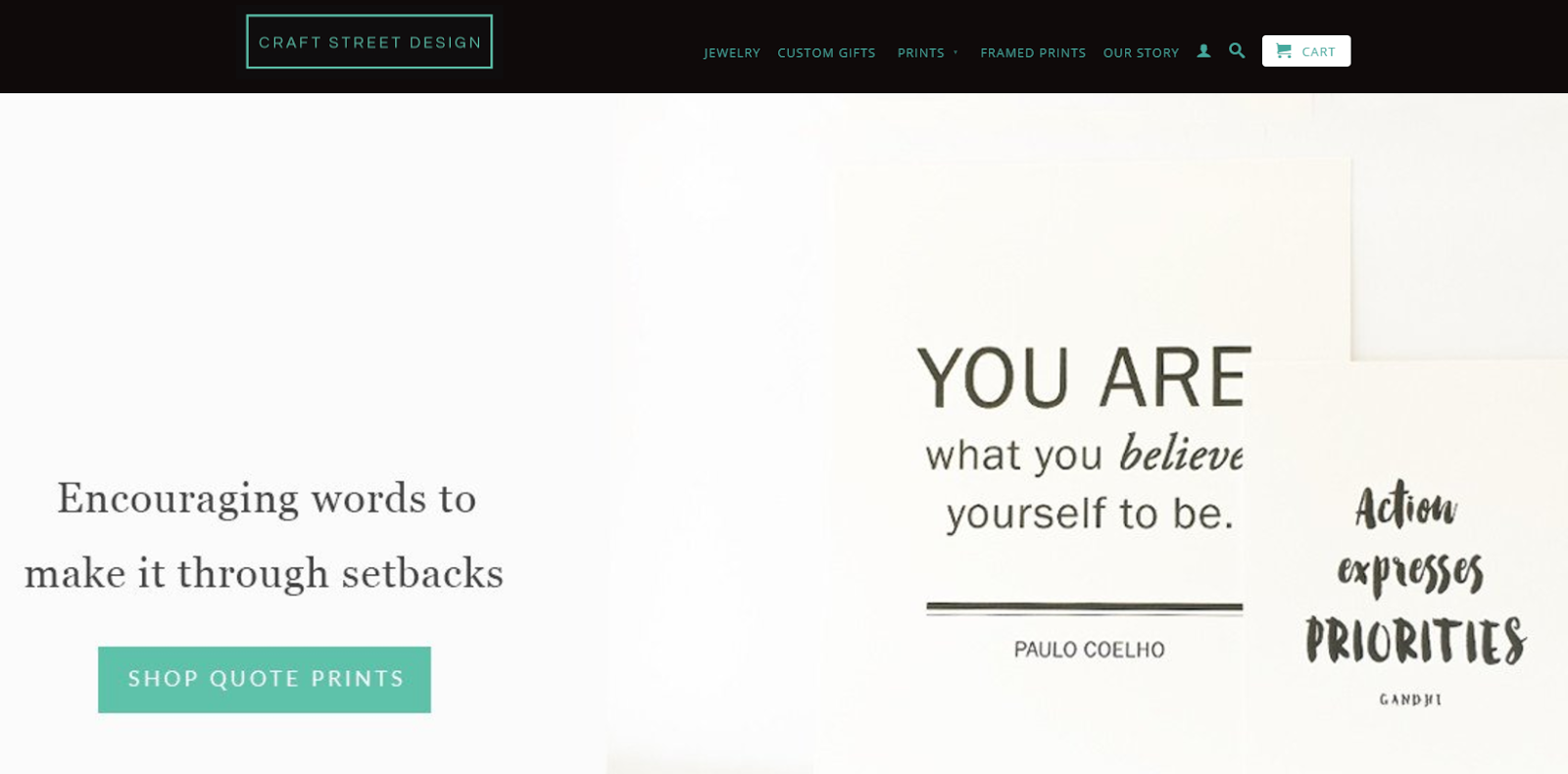
Comments